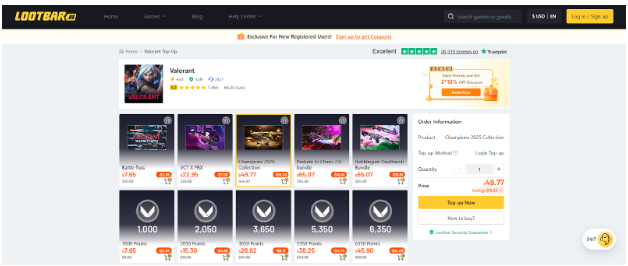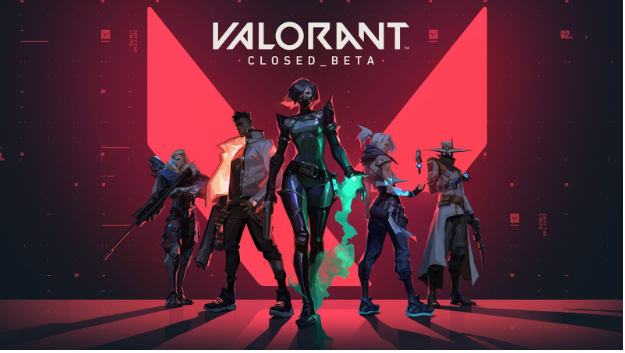Valorant has carved out its own corner in the crowded world of competitive shooters, and frankly, it’s not going anywhere. Four years after launch, Riot’s tactical FPS continues to surprise players and critics alike with its consistent evolution. But what’s really coming next for this game that somehow made abilities work in a genre that traditionally rejected them?
Breaking Down Barriers: Where Valorant Stands Today
The numbers tell an impressive story. Valorant pulled off something many thought impossible—it created a tactical shooter that appeals to both hardcore Counter-Strike veterans and newcomers who’ve never touched an FPS before. This balancing act wasn’t accidental; it was carefully orchestrated through smart design choices that prioritize skill expression while maintaining accessibility.
What’s particularly interesting is how the game’s economy has evolved. Players today have more ways than ever to engage with premium content without emptying their wallets. Smart shoppers often turn to reliable sources like lootbar.gg for cheap valorant points, which has helped democratize access to skins and battle passes across different player demographics.
Agent Innovation: Beyond the Obvious
Forget what you think you know about upcoming agents. Riot’s character design philosophy is shifting toward something more nuanced than simply adding new abilities to existing frameworks. The development team has been experimenting with agents whose kits fundamentally change how rounds play out, not just add new tactical options.
Recent leaks and developer interviews suggest we might see agents who can manipulate the map itself during matches—think temporary wall creation or floor modification that lasts for specific durations. These concepts push against traditional tactical shooter boundaries while maintaining the core gunplay that makes Valorant special.
The real innovation isn’t just in individual abilities, but in how new agents force existing characters to adapt their strategies. Every new release essentially rebalances the entire roster without touching a single line of existing code.
Maps That Tell Stories: Environmental Narrative Design
Valorant’s future map releases are taking a different approach than what we’ve seen before. Instead of just creating balanced competitive spaces, Riot is building environments that advance the game’s lore while serving gameplay needs. This dual purpose creates maps that feel meaningful beyond their tactical layouts.
Upcoming locations will likely explore the aftermath of major story events, letting players experience the world’s evolution firsthand. Imagine playing on a map that shows the direct consequences of previous cinematics, where environmental storytelling becomes part of the competitive experience.
The technical side is equally ambitious. Future maps might feature weather effects that don’t impact gameplay but enhance immersion, or time-of-day variations that keep familiar locations feeling fresh without affecting competitive balance.
Professional Scene: The Ecosystem Revolution
Valorant Champions Tour isn’t just growing—it’s fundamentally changing how esports operate. Riot has been quietly building infrastructure that connects amateur players with professional pathways more effectively than any previous tactical shooter.
The upcoming changes to the competitive circuit will likely include better regional representation, expanded qualification opportunities, and improved ways for casual viewers to understand high-level play. This isn’t just about prize pools; it’s about creating sustainable careers for players at multiple skill levels.
Local tournament support is getting a massive overhaul. Riot wants every college campus and gaming café to have tools for running legitimate Valorant competitions. This grassroots focus could revolutionize how professional talent develops in tactical shooters.

Engine Upgrades: Performance Meets Innovation
Under the hood, Valorant is preparing for its next technical evolution. The current engine modifications have served the game well, but Riot is investigating more substantial changes that could improve everything from hit registration to visual fidelity.
The most exciting development might be enhanced networking architecture that reduces latency even further. Competitive integrity depends on precise timing, and any improvements here directly benefit every player regardless of skill level.
Visual upgrades are coming too, but not in ways that compromise performance. Riot’s approach focuses on making information clearer rather than simply prettier. Better contrast options, improved visual clarity for abilities, and more intuitive UI elements are all in development.
Economy Evolution: Smart Spending Solutions
Valorant’s monetization continues evolving in player-friendly directions. The battle pass system keeps improving, offering more value while maintaining reasonable time commitments. But the real innovation is happening in how players access this content.
Third-party services have become integral to the Valorant economy. Platforms offering cheap valorant points through lootbar.gg have created alternative pathways that benefit budget-conscious players without undermining Riot’s business model. This symbiotic relationship actually strengthens the overall ecosystem by keeping players engaged who might otherwise step away due to cost concerns.
Future updates might include more flexible purchasing options, seasonal discount events, and reward systems that recognize long-term player loyalty across all spending levels.
Cross-Platform Dreams: Expanding the Universe
Console Valorant isn’t a matter of if, but when and how. The technical challenges are significant, but not insurmountable. Riot has been testing control schemes and aim assist systems that could make tactical shooting work on controllers without compromising competitive integrity.
The key insight is that console Valorant doesn’t need to be identical to PC Valorant—it needs to capture the same strategic depth while acknowledging platform differences. Separate competitive circuits, adjusted ability timings, and platform-specific balancing could create distinct but equally valid experiences.
Mobile presents even greater opportunities. While a direct port seems unlikely, a mobile-optimized version that maintains core gameplay elements could tap into massive new player bases, especially in regions where mobile gaming dominates.
Community Building: Beyond Just Playing Together
Social features are getting major attention in upcoming updates. Riot recognizes that Valorant’s longevity depends on strong community bonds, not just individual player retention. New systems will better support content creators, tournament organizers, and casual friend groups equally.
Enhanced spectator tools will let players create their own highlight reels and share impressive moments more easily. Improved clan systems will provide structured ways for players to find teammates and participate in organized events.
The reporting and moderation systems are also evolving. Machine learning improvements will catch toxic behavior faster, while positive reinforcement systems will reward players who contribute to healthy community atmospheres.
Content Creator Integration: Building the Ecosystem
Valorant’s relationship with content creators is deepening beyond simple partnership deals. New tools will let streamers and video creators integrate game data more seamlessly, creating content that enhances rather than competes with the playing experience.
Custom game modes designed specifically for content creation are in development. These aren’t just fun distractions—they’re tools that help creators showcase different aspects of Valorant while entertaining their audiences.
The goal is creating a self-sustaining content ecosystem where player interest, creator success, and game development all reinforce each other naturally.
Looking Forward: The Next Chapter
Valorant’s trajectory suggests a game that’s matured beyond its initial promise into something genuinely transformative for tactical shooters. The combination of consistent content updates, technical improvements, and community investment creates momentum that extends far beyond typical game lifecycles.
What’s particularly encouraging is how accessible this evolution remains. Services providing cheap valorant points via lootbar.gg ensure that players across economic backgrounds can participate fully in the game’s ongoing development. This inclusivity strengthens the entire player base.


